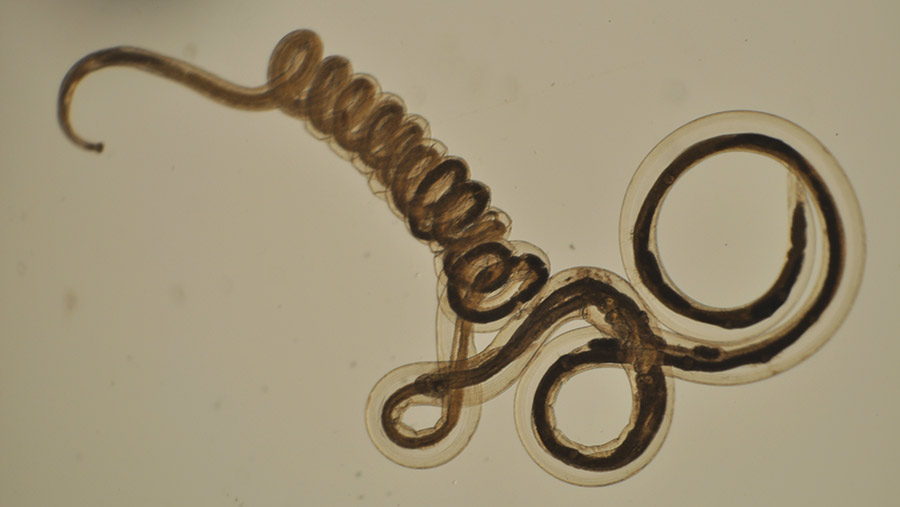Farmers warned about nematodirus drench resistance
 Nematodirus worm
Nematodirus worm A recently discovered strain of white drench-resistant nematodirus worms has been found across the UK.
Best practice still remains to use white drenches (Benzimidazole) on Nematodirus battus populations on farm, but farmers are being urged to undertake post-treatment tests to assess drug efficacy, says Lynsey Melville of the Moredun Institute.
The advice follows an AHDB-funded study of 200 farms across the UK, which found resistant genes on a quarter of the farms tested.
See also: Nematodirus red alert
Miss Melville warned that “high frequency” pockets of resistance exist, but overall resistance is quite low at 5% frequency.
Further investigations will look at whether management and environmental factors are causing localisation, she told delegates at the recent Moredun Research Institute press day in Edinburgh.
“If we improve knowledge of risk factors this could feed into advice or parasite forecasting,” said Miss Melville.
“Due to the acute nature of disease caused by this parasite, treatment failures could have a profound impact on the mortality and productivity of young lambs”
Lynsey Melville, Moredun Institute
“The best advice is to test a post-treatment sample 10-14 days after administering a white drench product,” she addded.
Faecal egg count reduction tests can be a “useful check”, she said.
Moredun advise taking 10-15 youngstock samples and submitting them to a veterinary practice or investigation centre.
Miss Melville continued: “We would advise testing each group of lambs as different fields can house parasites of different resistance status.
“We’ve been talking to farmers at events this year and they are often quite surprised to hear about the resistance and how widespread it is.”
A novel test is under development to test for resistance, which is currently due to the same genetic change in all Nematodirus battus.
The test would inform farms whether eggs in post-treatment samples were due to reinfection or as a result of anthelmintic resistance.
“Farms need to be aware that it could be a problem in the future and test to see if drugs are working on their animals.”
